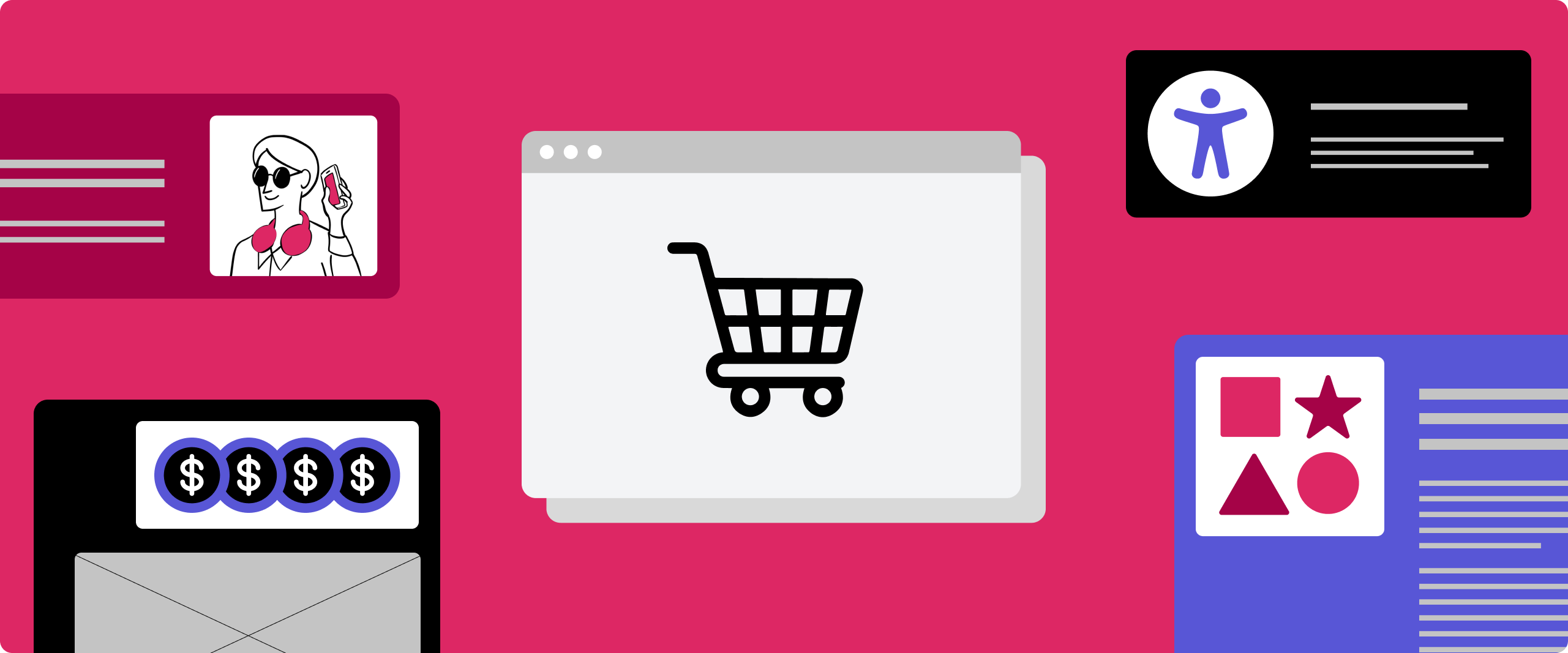
Insights: The state of online shopping for people with disabilities
Introduction
Over the last 20 years, online shopping has become one of the driving forces of the retail economy. Fable recently surveyed our community of assistive technology users in order to get a sense of what the online retail shopping experience is like for people with disabilities, and how they make online shopping decisions.
Online shopping days like Cyber Monday and Prime Day have become not just sales days, but media events. However, it wasn’t always that way. In fact, online shopping was a technology originally created to help people with disabilities. In May 1984, Jane Snowball, an older woman experiencing mobility challenges making shopping difficult for her, would place the first ever online order: margarine, cornflakes, and eggs. She was part of a project pioneered by The Gateshead Council in the United Kingdom, with the participation of Tesco’s and other local stores.
From those humble beginnings, online shopping would expand over the next 40 years, to become the economic powerhouse it is today: in the United States alone, consumers spent a trillion dollars in 2022. But as the industry has expanded, has it abandoned its roots? Though originally intended to help people with disabilities, many disabled consumers find themselves increasingly frustrated, limited, and abandoned by the E-tail industry.
People with disabilities shop online nearly twice as often as the general population
According to Cloudwards, only 22 percent of general consumers shop online at least once a week. However, in our survey to our community of people with disabilities, 50 percent shop online for physical products once a week and 6 percent shop online daily.
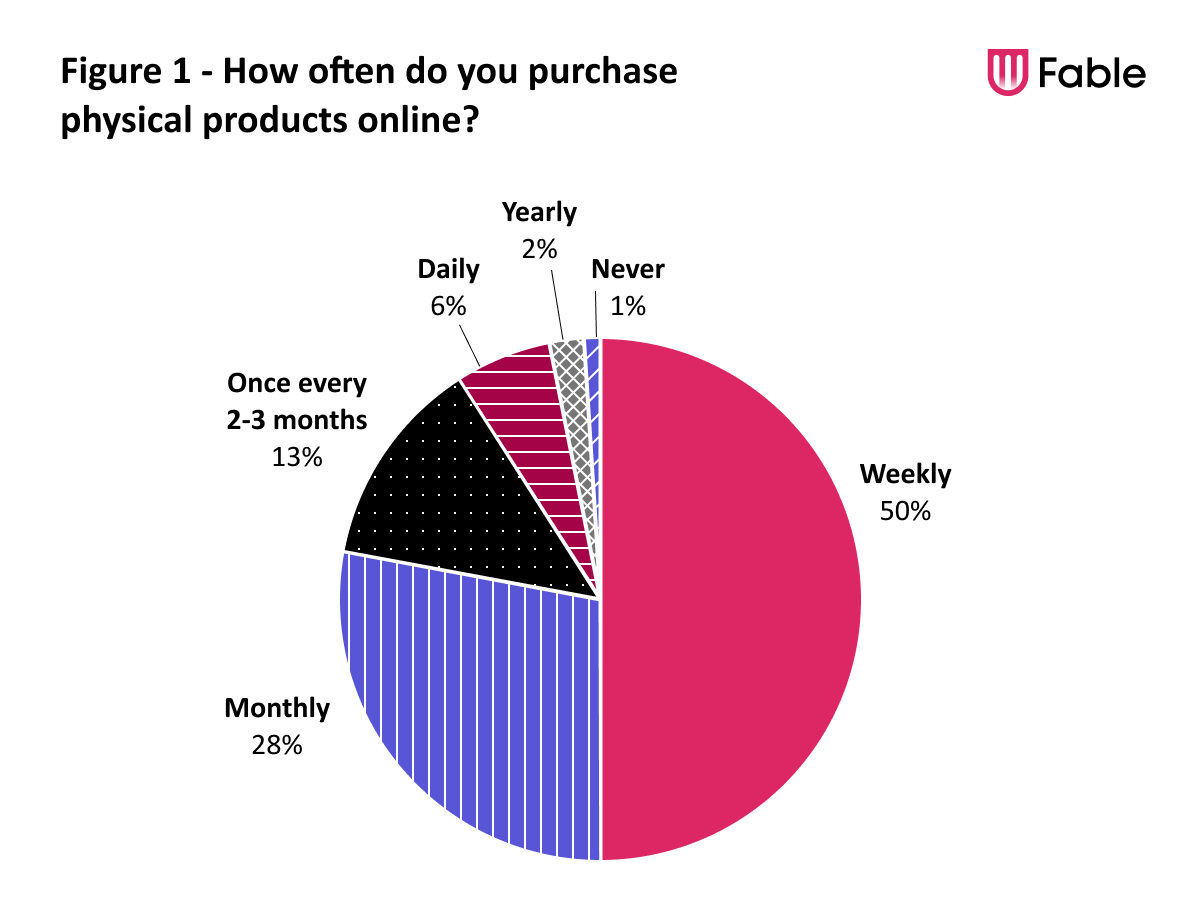
This is reflected in our survey data when people with disabilities are asked about how frequently they shop for digital, rather than physical, products: 24 percent shop for digital products weekly, and only 3 percent shop daily. This is about in-line with the general statistics.
The reason for this difference is obvious. Assuming the website is accessible, online shopping makes for a much easier experience for people with disabilities. It eliminates the difficulty and expense of travel to and from the store, removes the need to search a physical space that may be inaccessible in order to find products, and doesn’t require any advance planning to ensure that the accommodations a person with a disability might require are available.
Factors that affect the online shopping decisions of people with disabilities
As online power shoppers, the people with disabilities we surveyed know exactly what they’re looking for in an e-commerce store: accessibility, variety, and price.
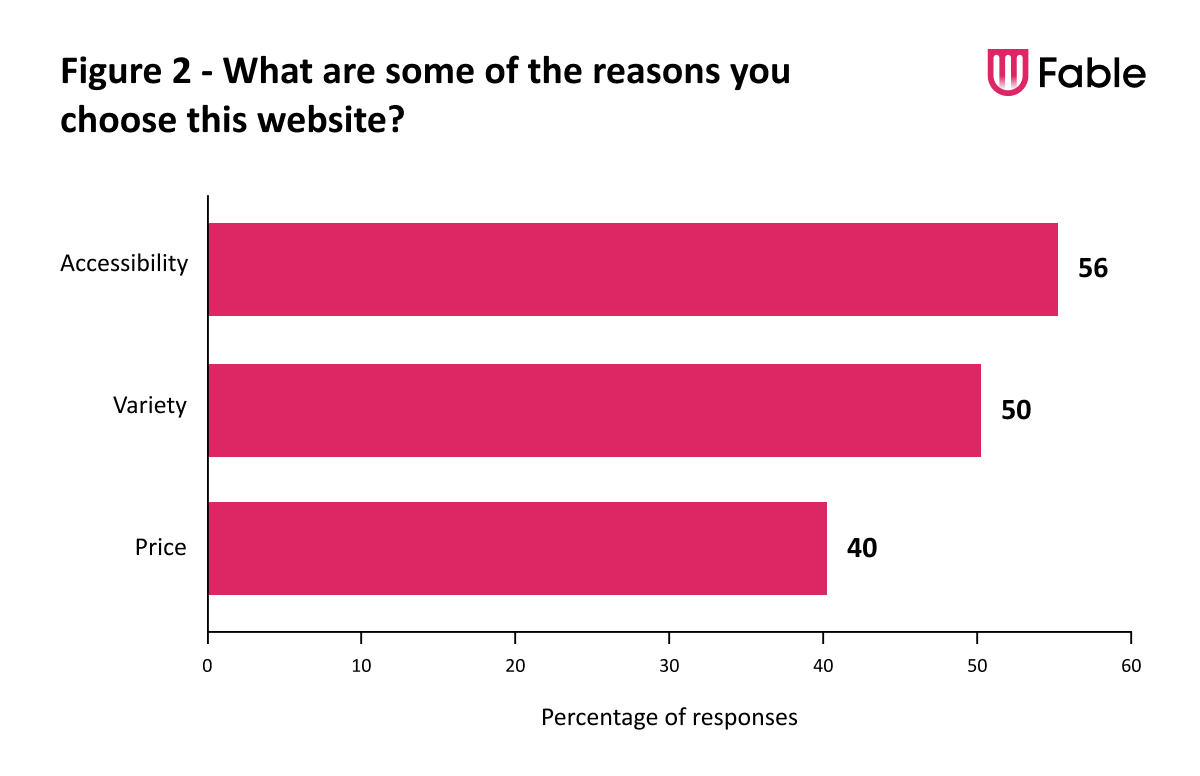
Accessibility
“They have a disability support number.” — Julia F
“…excellent selection of products, great return policy, easy to use with a screen reader and mostly accessible.” — Jim D
Accessibility was the most frequently mentioned reason people with disabilities chose one website over another. When spending money, and using the site frequently, it is important that the site in question is not just usable with assistive technology, but also easy, frictionless, and confidence-building. For people with disabilities, this is about much more than the details of how their assistive technology interacts with the website. In fact, some of the most frequently mentioned accessibility requirements were:
- ease of returns
- the ability to contact support
- detailed product descriptions
When thinking about an excellent shopping experience, the most important thing to disabled shoppers is that they know exactly what they’re purchasing, and that if something goes wrong, it’s easy to get support, return the product, and get a refund.
Variety
“I like that I can get most products I need in one place.” — Douglas L
“I am most familiar with Amazon’s website and app, and they have almost every product I need.” — Cory K
The second thing disabled shoppers value is the ability to purchase a large variety of items in one place. Rather than learning to use multiple apps, disabled shoppers find it much more efficient and convenient to become an expert user of a single app and centralize as many purchases as possible in one place. This makes people with disabilities extremely loyal customers, who sign up for and value monthly memberships, branded credit cards, and other loyalty programs. As they already prefer shopping as much as possible on a single website, these perks help them feel rewarded for behavior that is already easier for them, and the reduced prices they offer are the third major contributing factor in the shopping decisions of people with disabilities.
Price
“Prime offers free shipping, I am able to call customer service if I have an issue, I can use AMEX reward points for purchases.” – Jamie H
“I have a credit card through them, so I get 5% off.” – Jen T
Amazon: leading across these three factors
In the current retail landscape, the above factors mean that the majority of people with disabilities converge on Amazon as the place they pick for most of their online shopping needs. It offers an app and website that disabled users find largely accessible, a vast variety of products, and loyalty programs that shoppers with disabilities find helpful to save money.
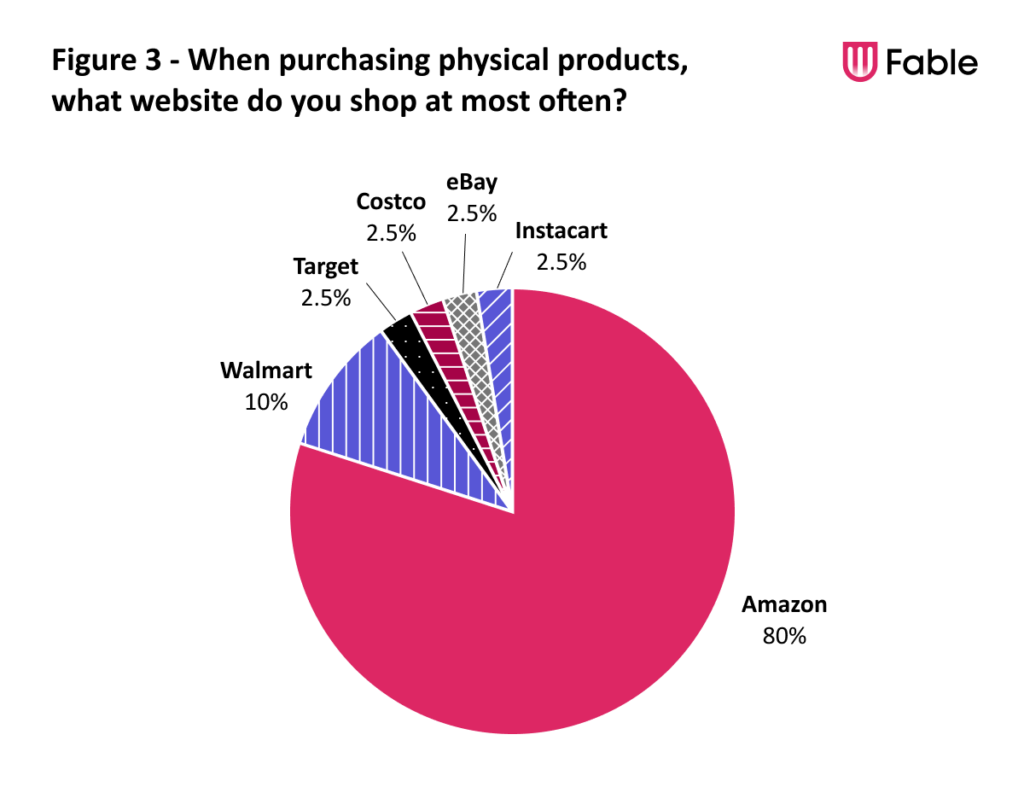
Inaccessibility driving centralization towards larger ecommerce websites
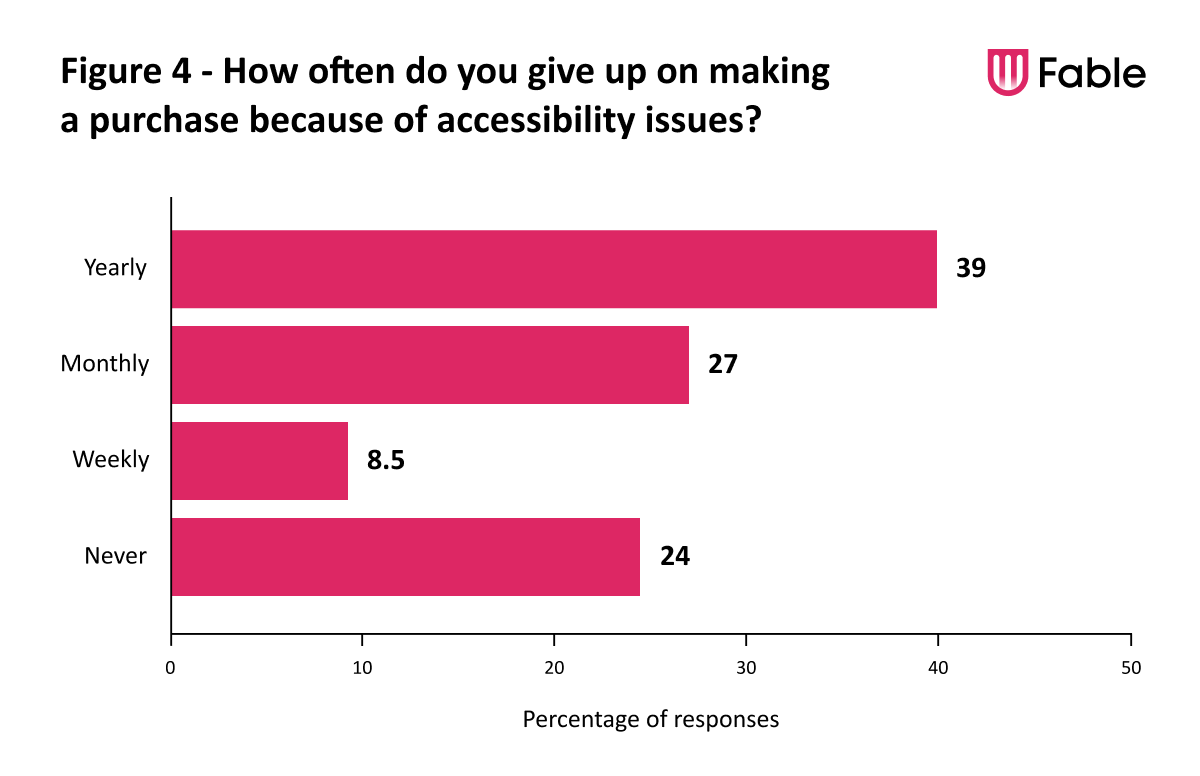
“Sometimes the description of a product isn’t enough for me to determine if the product is what I need and almost all the time, product images are not described. Also, poorly coded webpages can make buying things frustrating because it takes a long time sometimes to figure out how to work around them.” – Ka L
Another factor that drives people with disabilities to stick to a small number of online stores is, however, less fortunate. Currently, 27 percent of the people we surveyed find that accessibility issues force them to give up on making a purchase at least once a month, and eight percent find that this happens weekly.
"I've noticed many buttons don't provide auditory feedback when I press them with my screen reader. If the button reads, "Place Order," it makes me even more nervous since I don't want to accidentally order the same thing multiple times." – Josh
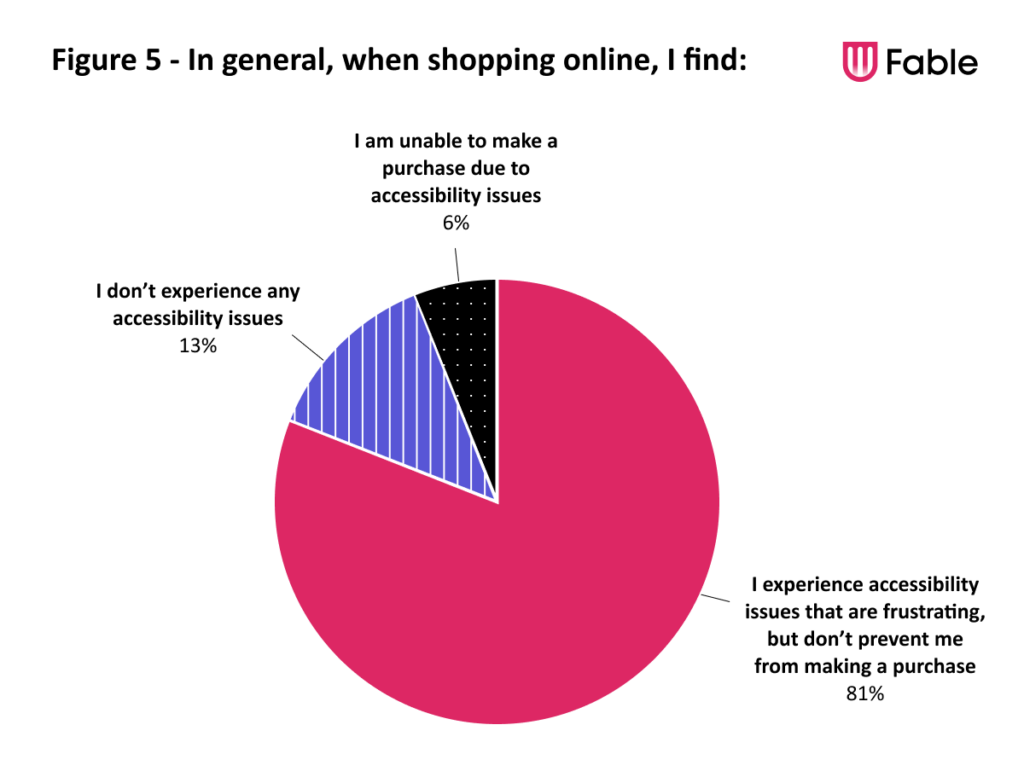
Even when they are able to successfully make a purchase, 81 percent of respondents find that they regularly experience accessibility issues that are frustrating. Only 13 percent of people find that they don’t generally experience accessibility issues when shopping online.
“Two major things I experience on a weekly basis shopping for groceries. Firstly, I can’t always locate the amount of certain items; the amount, portion, size, or weight is not clear. For example, I’ve been surprised a few times to receive a small bag of Doritos instead of the normal party size. The two sizes look the same in the picture and the weight wasn’t clear on the listing or the product description. This has happened to me with several items, especially things on sale. I would get excited about getting a good deal, but the amount or the weight is actually a lot less than I thought and they didn’t make the information clear. Secondly, I feel like their customer service and return process is not accessible. I’ve had to ask another family member to do this for me because it is difficult to see and navigate.” — Guenivir K
It’s not surprising people with disabilities are reluctant to try new websites, when they’re routinely encountering accessibility issues, have to constantly learn work-arounds, and often find issues that cause them to feel a lack of confidence that they’re purchasing the product they intended.
Accessibility issues also limit the types of products that people with disabilities find they’re able to purchase online. Clothing, for example, was mentioned most frequently as a product that is extremely difficult for disabled shoppers to purchase, while food and other frequently purchased items are found to be the easiest.
Money left on the table

“If the website is hard to read, look at, navigate I become suspicious of the product as well.” — Baylee B
As everyone knows, fear, reluctance, and irritation aren’t feelings that predispose people to open their wallets. But all too often, people with disabilities are choosing to shop online due to necessity, because shopping in-person isn’t viable. This makes shopping a difficult task to be completed, rather than something to be enjoyed. How much more money might disabled shoppers spend if they had a frictionless experience that gave them feelings of joy and confidence?
On top of that, the large number of online transactions abandoned by people with disabilities is money left unspent. How much are online shops losing when people with disabilities, who are already some of the most frequent and loyal online shoppers in the world, are forced to abandon a transaction due to inaccessibility? Currently, people with disabilities in The United States control 490 billion dollars in disposable income, or over a trillion dollars world wide. As the aging population increases, these numbers will only continue to rise. Failing to think about accessibility is failing to meet the needs of an enormous segment of the digital economy.
When they are forced to abandon a transaction, people with disabilities will speak up:
- 20% will reach out directly to contact the company
- 11% will post a review, and
- 8% will post on social media
But all too often, these support requests, reviews, and social media posts go unheard, unanswered, and unaddressed.
Conclusion
Thinking about accessibility means more than thinking about checklists, or auditing your website every five years. Factors like confidence and ease of use can’t be detected by automated testing, or dictated by guidelines. Regularly including the voices of people with disabilities in your design, development, and testing processes is the only way to collect and monitor this kind of data. Ensuring your employees have the training they need to include accessibility in their daily work is the only way you can integrate it from the ground up, building the foundation required to create an accessible experience for everyone.
If you’re interested in getting direct feedback from people with disabilities or training your digital teams on building more inclusive products, schedule a demo of Fable today.
